Report Data Tables represent a Data Table in a Data Set of the Report Data Source or Report Data Context and display information in a tabular form, with Data Rows and/or named Data Columns.
To add or edit a Report Data Table click on the Report Designer tree-view and select a Report Section or Report Group and then click the menu Edit | New, Insert or Edit Data Table.
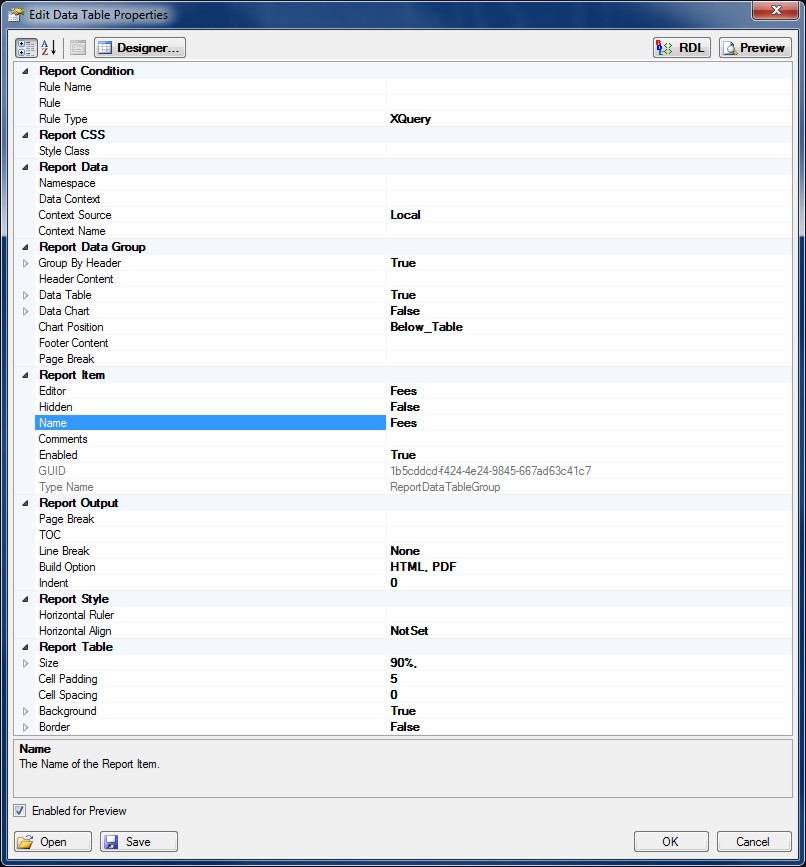
The Build Option property controls the output of the Report by including the content in HTML and / or PDF builds.
Report Data Table Designer
Click the Designer button to open the Report Data Table Designer. Select the Table Name from the drop-down list and then add the Data Columns to include in the Report and the order in which they should be presented.
Data can be grouped into sections by adding Data Columns to the Data Group By list.

Use the up and down arrow buttons to change the order in which the Data Columns appear in the Data Table.
Data Filters can be applied to Report Data Tables for filtering and sorting.
To enable Data Filtering click the Data Filter (...) property button to open the filter properties page.

Data Filters can be used to select and sort data from Data Tables returning specific results and / or rearranging into some meaningful order.
For example, if a Select Filter is applied for Fee Name = 'Cool Doc Fee' then only the data with this criteria will be output in the Data Table.
Report Queries as an either an XQuery or Python expression to query the Report Data can also be used for Data Selection, Data Sorting and Data Limits.
Data Row Limit
The number of Data Rows in the Data Table can be limited by specifying a Row Limit. Open the property page for the Data Filter and enter a limit for the Data Rows.
Data Distinct
Data Distinct determines how data is summarized in Report Data Tables with special functions for summarising data by Sum, Average, Count, Max, Min, First, Last and Exists.

Enable Distinct Values and choose the relevant Data Column(s) and function for the Data Table according to how the data needs to be summarised or presented.
Data Filter Designer
The Data Filter Designer is a powerful tool to help with the design and application of Data Filters and Data Sorting on Data Columns.
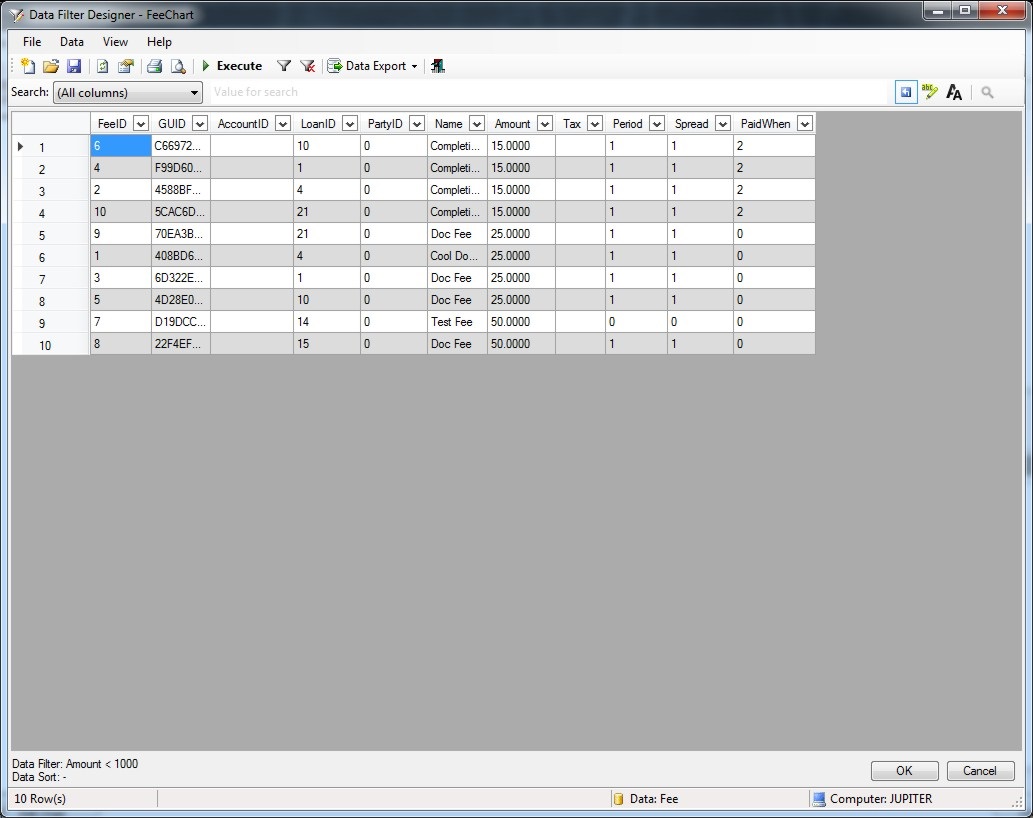
Select the Data Columns to filter and / or sort from the drop-down lists.
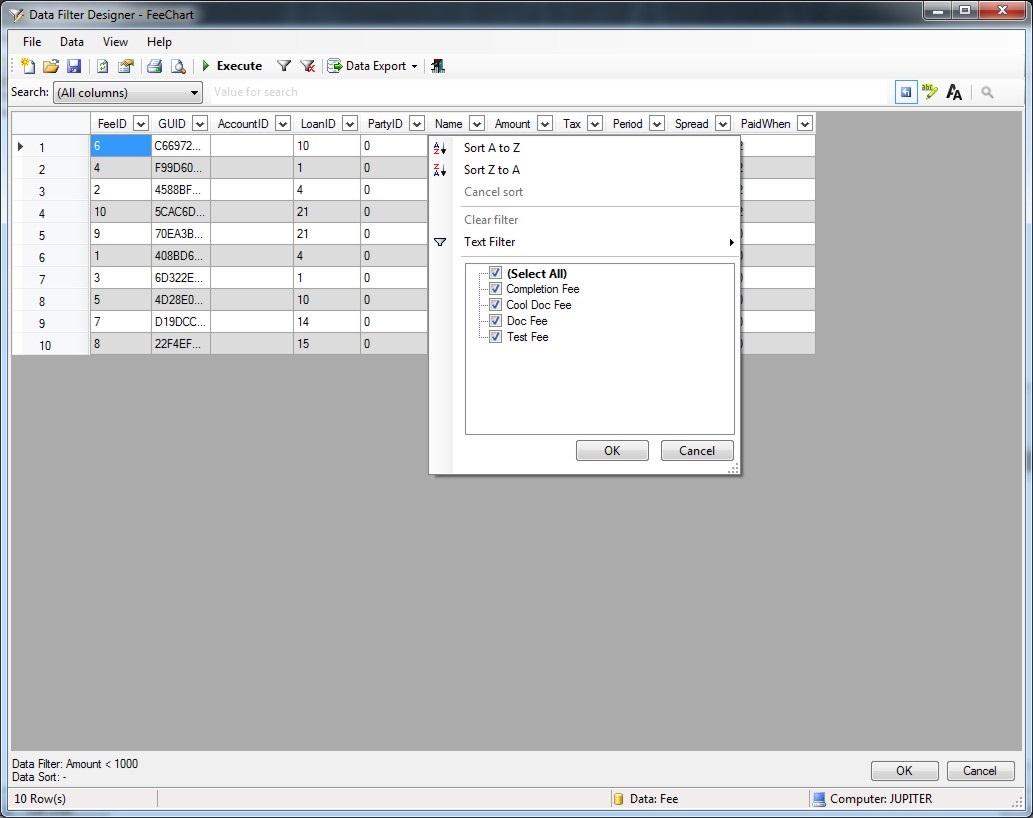
Click the 'Execute' button to view the filtered data output and then OK to apply to the Report Data Table.
Data Column Properties
The Data Column style and format can be configured by applying settings in the properties page. For example a column can be specified as having a currency format with rounding and decimal places.
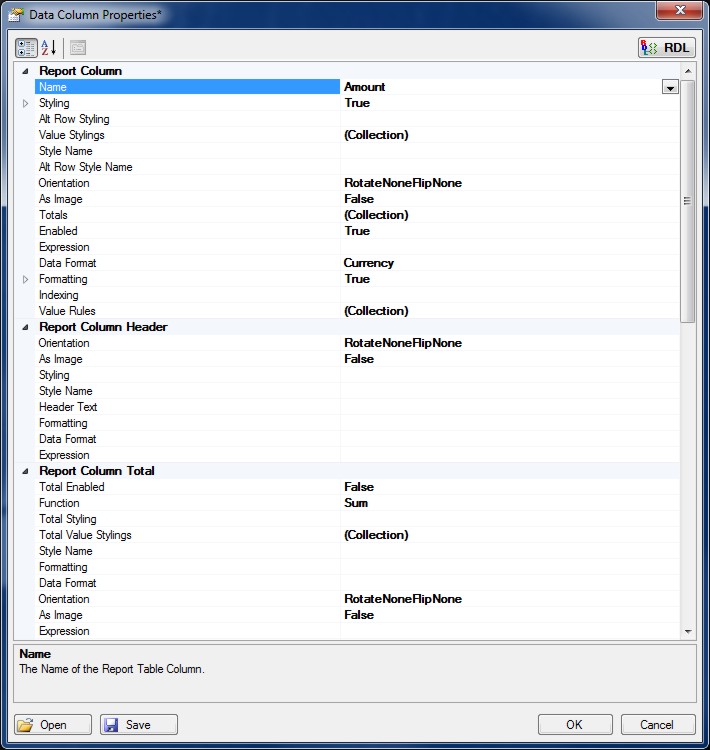
Data Columns can include advanced formatting and styling properties to customise the output.

Data Column Totals
Report Data Columns can also display a Total Row with special functions for summarising data by Sum, Average, Count, Max, Min, First, Last, Exists, Standard Deviation and other specialist maths functions.
Enable the Data Table Totals Row(s) option by checking and then enable on the Data Column or add Totals to the Data Column Totals collection.
Data Column Formatting
Data Formatting can be applied to individual Data Columns. Select
the best formatting option for the Data Column output according
to you requirements.
Regular expressions and inbuilt functions can also be applied to manipulate and extract data.
Data Formats can also be declared globally in the Report to apply common Data Formatting options. If a global Data Format is available it will be shown in the drop-down list under the property Format Name.
Data Row and Alternate Row Styling
Data Rows and alternate Data Rows in the Data Table can styled with fonts, fore color, back color, borders and various other styling properties to customise the appearance of the Data Table. Expand the column properties and configure the styling on the property page.
Data Group Properties
Data can be grouped together and the style and formatting controlled by applying settings to the group using the properties page. Click the arrow button to add the Data Column to the Data Group.
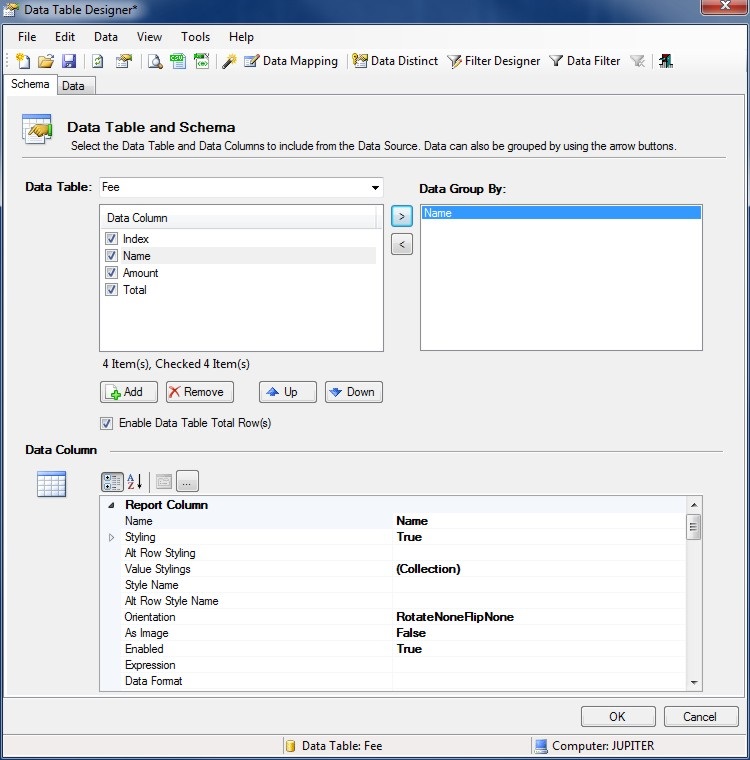
Click the Data tab to specify the Data Group properties and Data Charts.
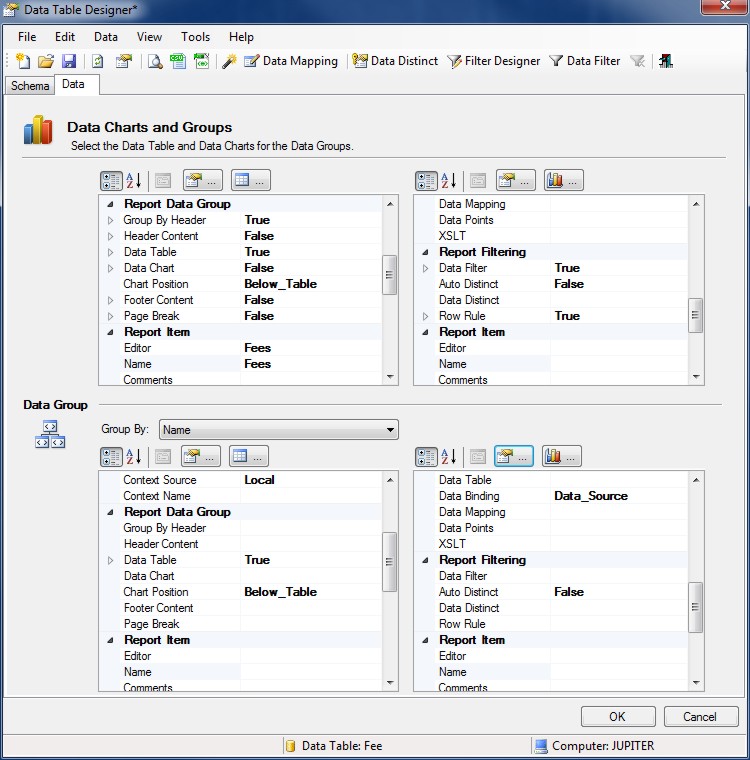
Include a Data Chart in the Report with the Data Group by expanding the properties and enabling the Report Chart.

Click the Chart Designer button to setup the Report Chart for the Data Group.
Report Data Tables can be defined with Report Data Contexts which are used to drive and build Report output content and also allows the consolidation and integration of data from multiple different sources and types such as API's, websites and data files to be read and used in the Report.
Data Contexts can be applied to specific Report elements allowing data in XML documents to be contextually enumerated. The default Data Context is the Report Data Source (XDM) root node and if no Data Context is specified then the current Report Data Source will be used.
To apply a Data Context to a Report element expand the Data Context property or click the (...) property button and specify the Content Type as either a Literal (Constant) or a File.
Context Types can be either XQuery, Python, XML, XLS, XLSX, CSV, JSon or HTML.
The Report Data Table can use the Report Data Source or a custom Report Data Context specified by the Data Context property.
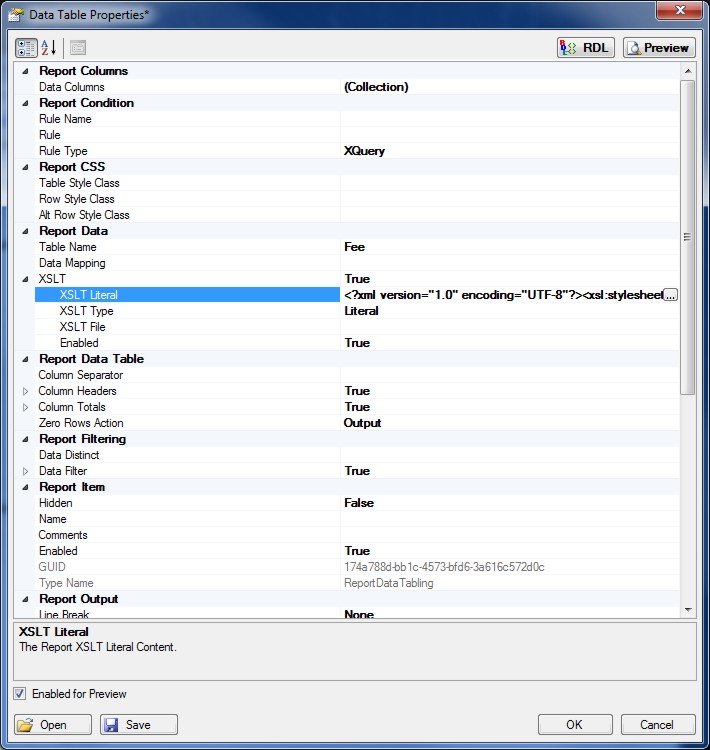
In addition XSLT Reporting features Extensible Stylesheet Language Transformations which is a language for transforming XML documents into other XML documents or other formats such as HTML for web pages or plain text.

To specify a Report XSLT to transform the Report Table Data click the XSLT (...) property button.
Data Source Mapping can be used to map data and add additional custom Data Columns to a Data Table using formulas, expressions and queries.
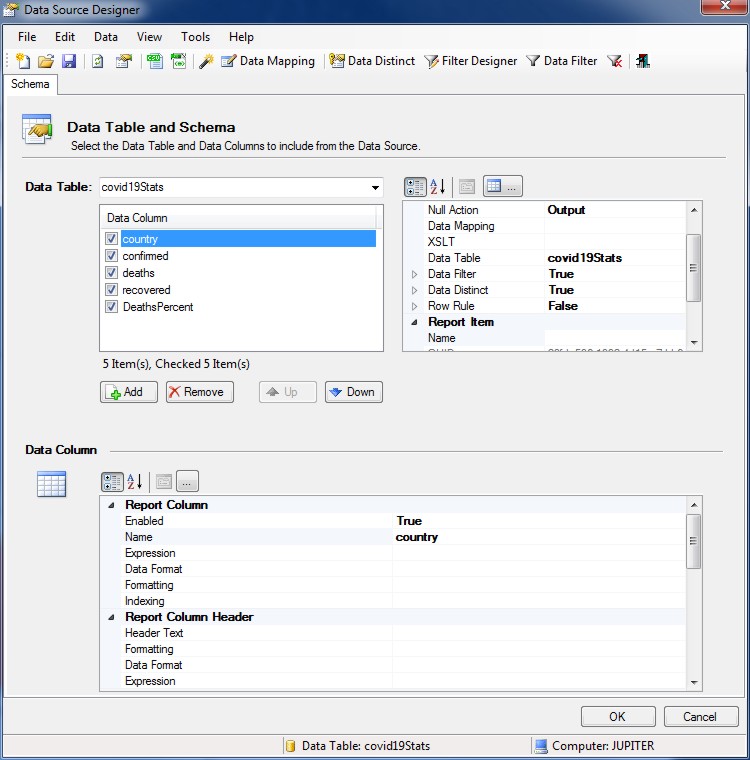
Add Data Columns to the Report Chart Data Mapping and design formulas, expressions and queries accordingly to create the custom data.
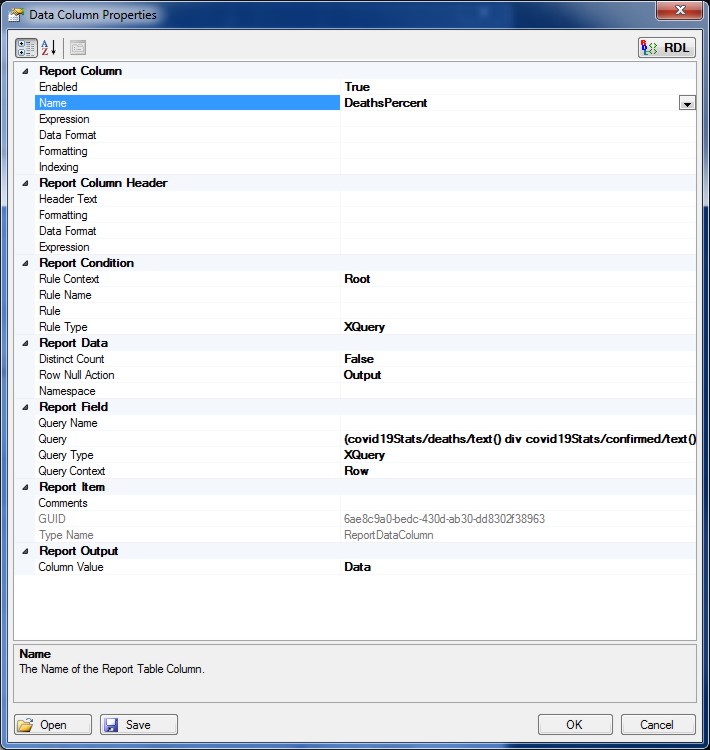
Click the OK button to add the Data Column to the Data Source Mapping.
File URI's
Report File URI's are expressed as Uniform Resource Identifiers (URI) and can be either a Literal or a Query to specify the location of the File Resource. Literal values are constants that are determined by the URI File property.
Query based URI's are determined by the result of the URI Query which can be a series of XQuery or Python statements to specify the location of the File URI.
Report Rules are conditional XQuery or Python expressions that determine if Report content is enabled and applied to the build. Rule based queries return a Boolean that is either True or False and can query the Report Data Source and other Report Data Contexts. Rules are used for controlling the flow, visibility and activation of reporting content.
Report Rules if empty or null by default will always return True.
Report Namespaces are used for providing uniquely named elements and attributes and is a mechanism to avoid name conflicts by differentiating elements or attributes within an XML document that may have identical names, but different definitions. If the Report Data Source contains namespaces they can be applied to the XQuery Processor.

